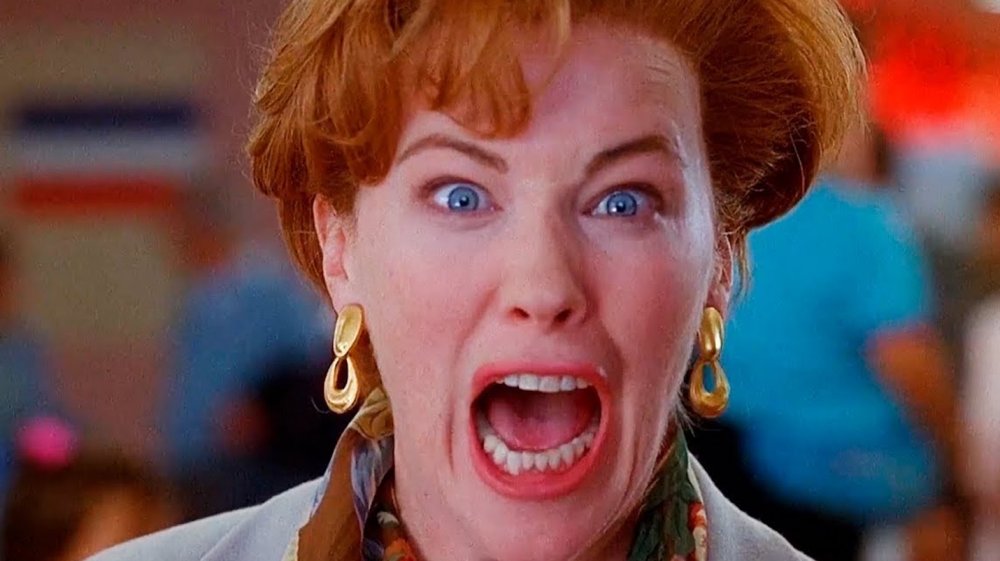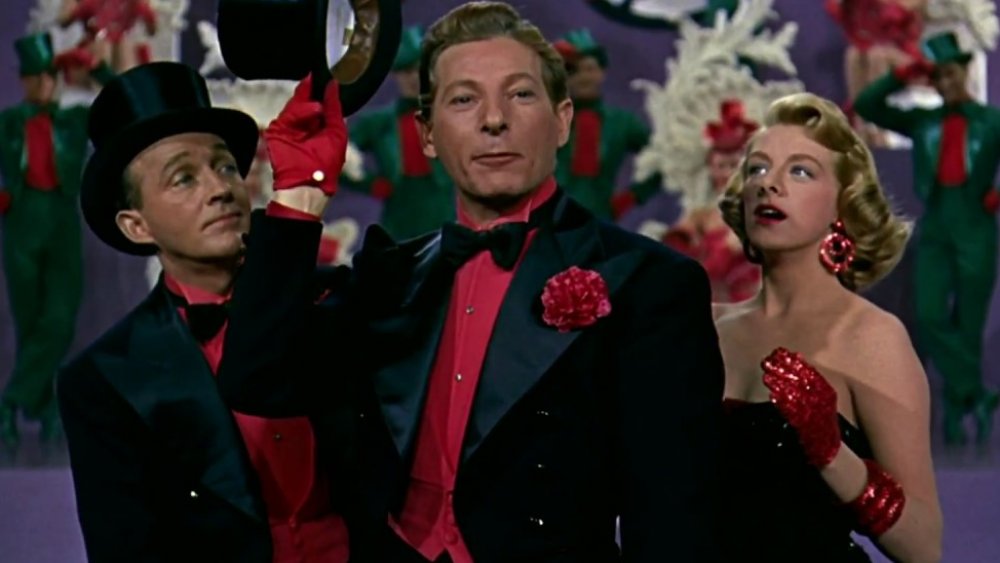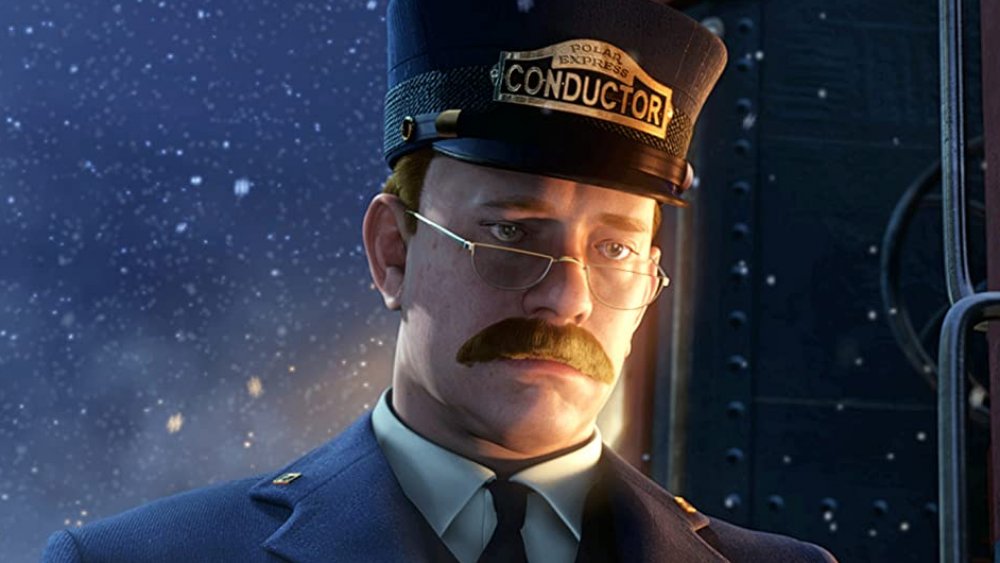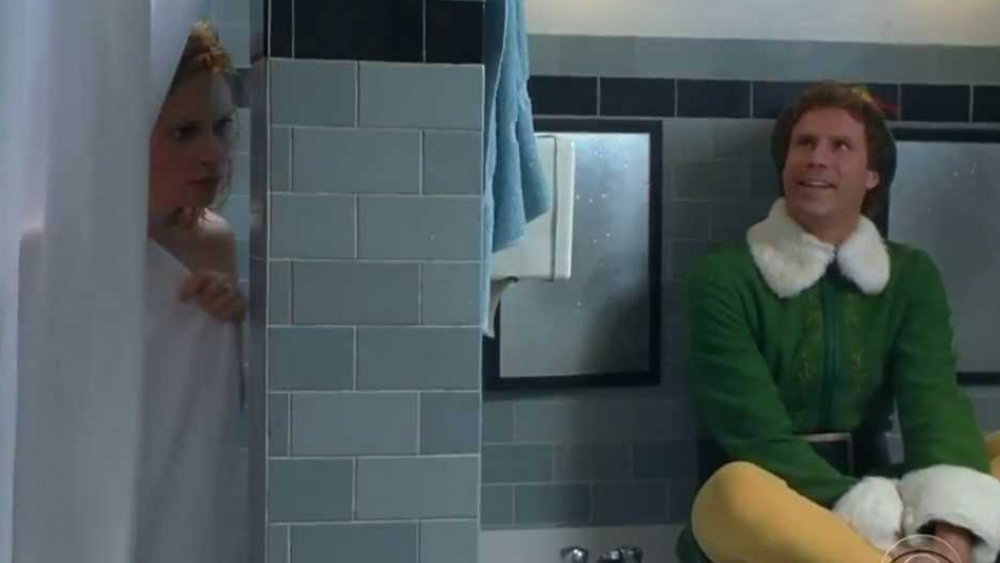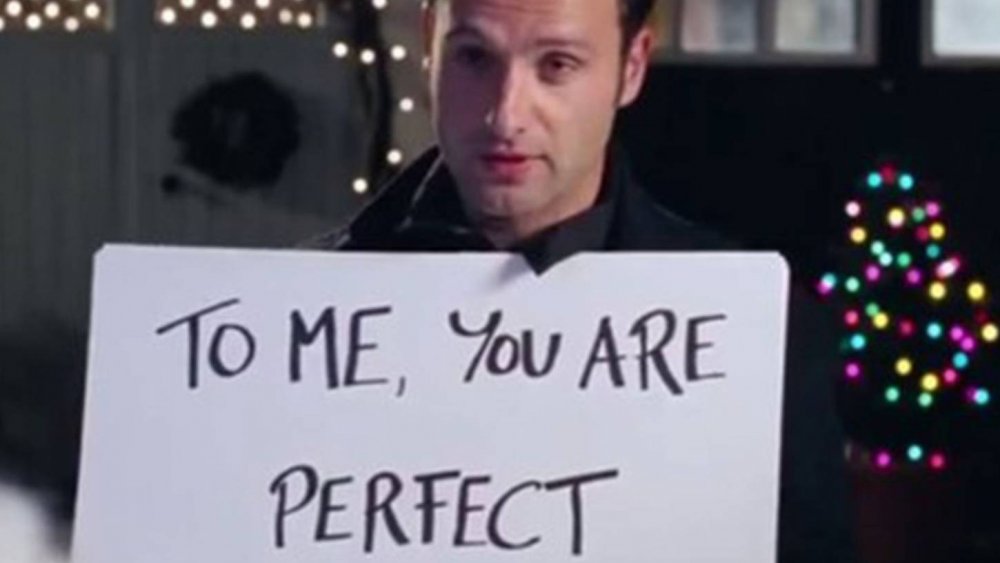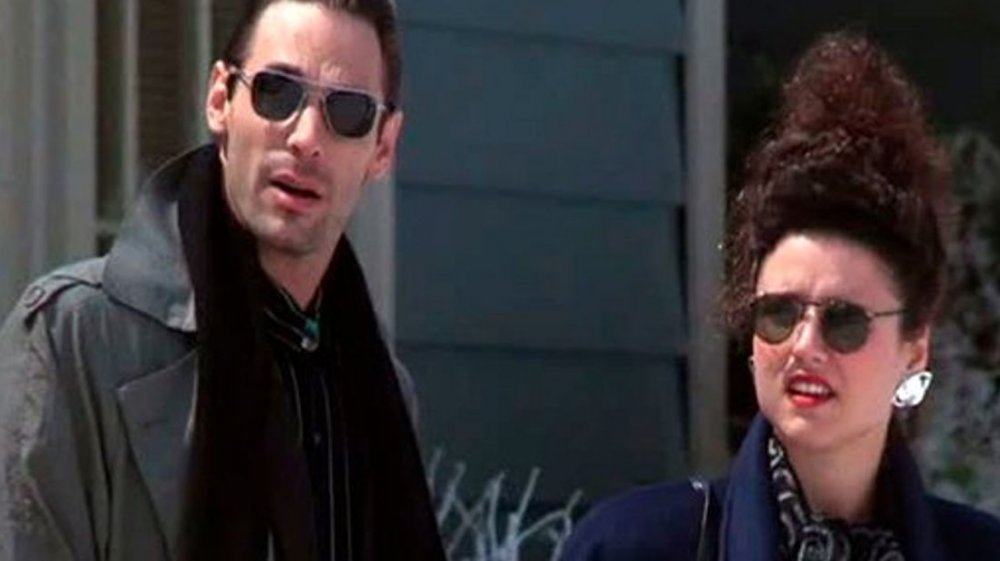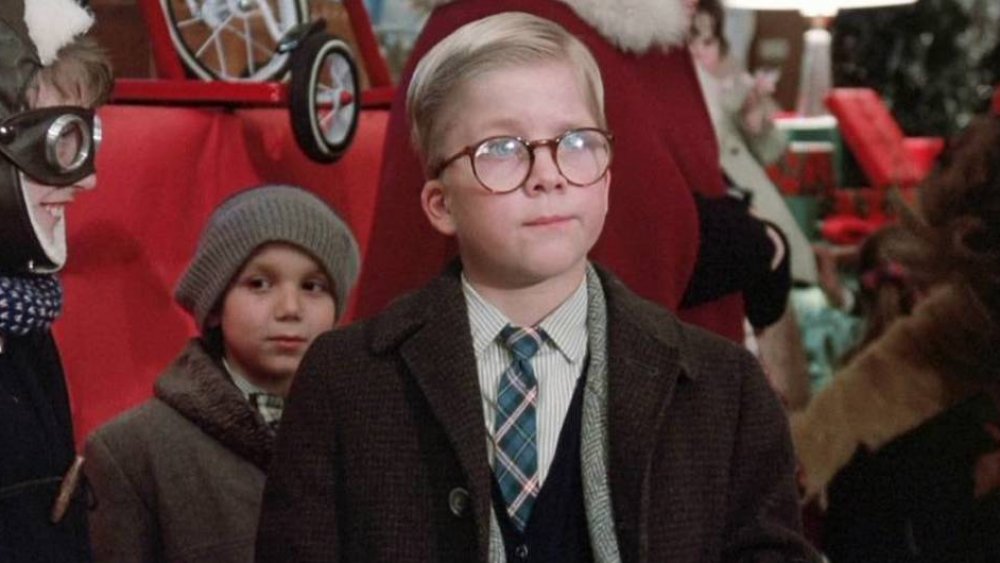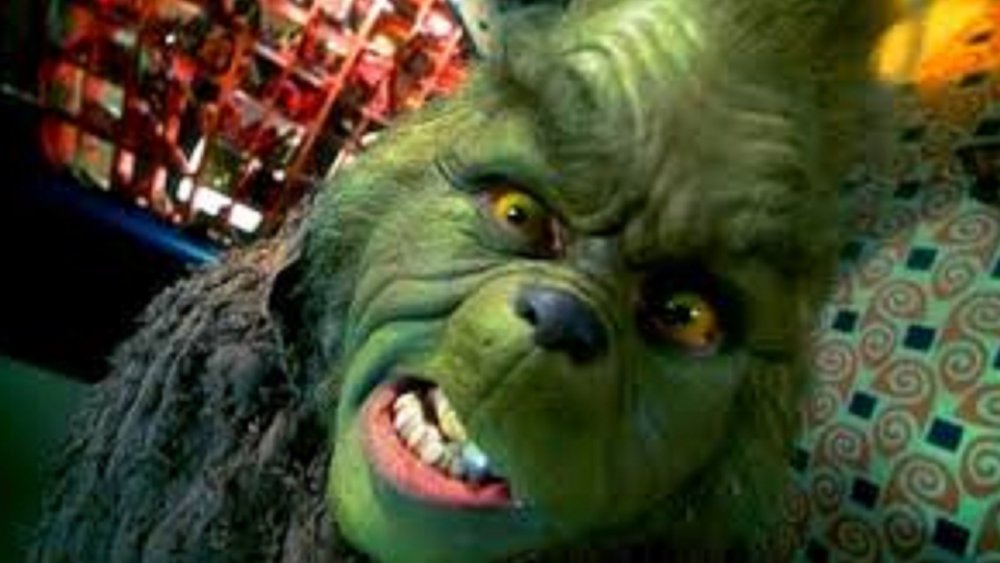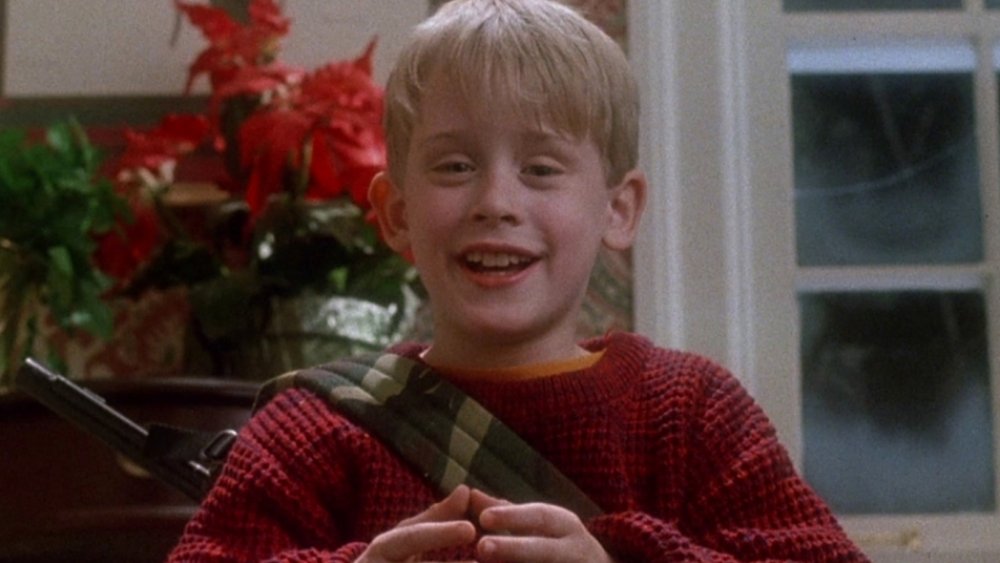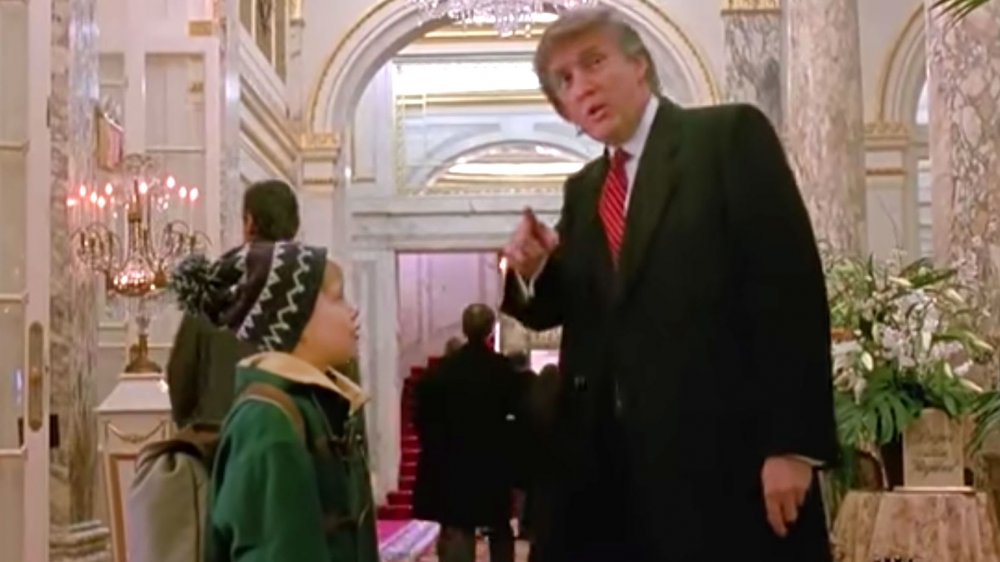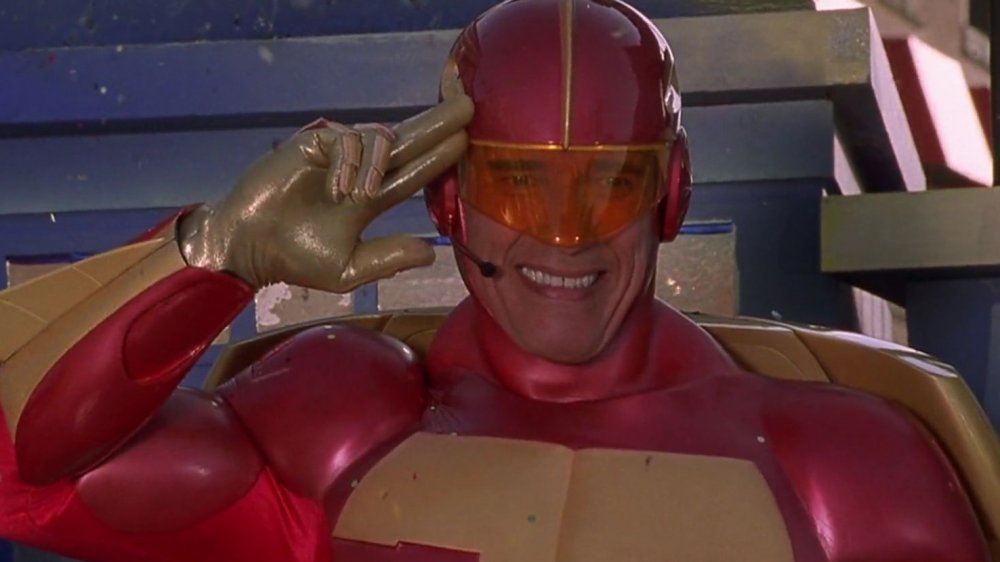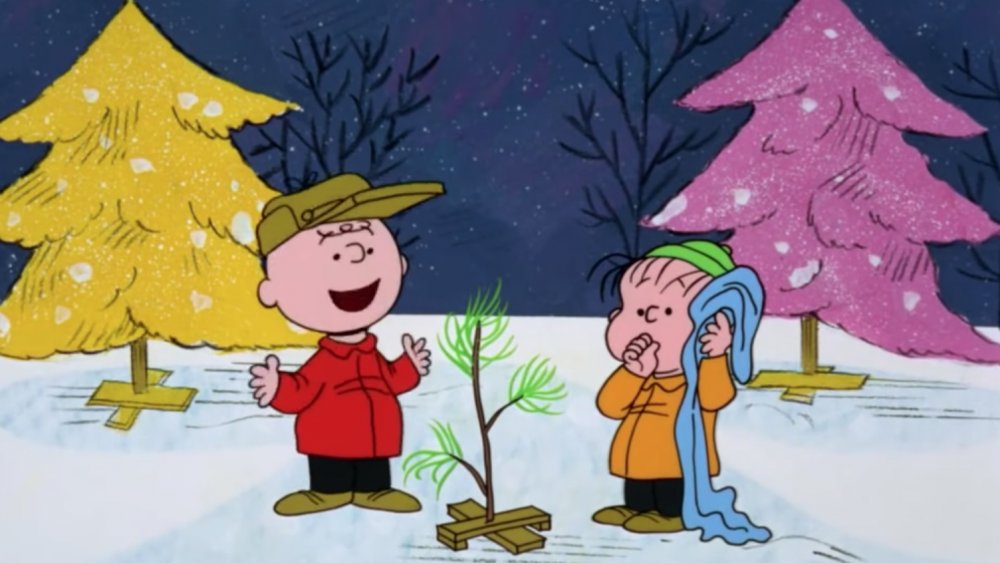Christmas Movie Moments That Didn't Age Well
Watching beloved, holiday-themed movies each winter season is as much a part of any family's celebration of the December holidays as putting up a tree, decorating the house, opening presents, and eating a turkey with all the trimmings. Every household has their particular handful of favorite films that have stood the test of time: They're energetically acted, eloquently written, and, after years of watching them, heavily imprinted with nostalgic memories of enjoying them with loved ones.
Truly, there is nothing like watching a favorite Christmas movie with one's family. But loving these films the way we do means we tend to only remember the funniest, most heartwarming, and most relatable moments of these movies. Collectively, we tend to forget the not-so-good parts, the moments that are awkward, the jokes that are egregious, and everything else that's just plain uncomfortable. Here, then, are the worst moments from the best Christmas movies — or at least the ones that have grown the most egregiously dated. These scenes, jokes, and lines might be part of unassailably classic holiday fare, but they're still plenty off-putting.
White Christmas is a little too white
The perennially popular 1954 movie musical White Christmas is about as Christmas-y as a Christmas movie can get. Much of the action takes place on assorted Christmases (including one set in a troop encampment during World War II), which affords star Bing Crosby the opportunity to sing lots of Christmas songs, including his signature mega-hit, "White Christmas." Crosby and Danny Kaye play a couple of Broadway stars who team up with a sister act (Rosemary Clooney and Vera-Ellen) to revitalize a failing Vermont inn that does great business during the holiday season, what with its big Christmas spectaculars. One dance number sticks out in particular decades later — and it's not for a good reason.
The main four actors perform "I'd Rather See a Minstrel Show," an overwhelmingly loving tribute to that turn-of-the-century vaudeville-style of entertainment in which white people portray broad and gross caricatures of African-American people, usually with the aid of "blackface" makeup. On and on the performers sing of how much they love these shows, practically glowing with nostalgia for a form of entertainment that depends entirely upon the degradation of others. Horribly enough, this is something of an improvement over White Christmas' predecessor. The movie is a loose remake of the 1942 film Holiday Inn, which didn't just discuss minstrel numbers — it shows one, complete with blackface.
CGI technology has come a long way since The Polar Express
Certain Christmas storybooks are just as fondly remembered as Christmas movies. Countless families still read "Twas the Night Before Christmas" together on Christmas Eve, and before it was a popular song and TV special, Rudolph the Red-Nosed Reindeer was the subject of a bestselling children's book. Chris Van Allsburg's lushly illustrated children's book, The Polar Express, ranks among those classic tomes, despite the fact that it's a relative newcomer to the field, being first published in 1985. A perennial bestseller, favorite of millions, and a visually stunning work of illustration to boot, it was only a matter of time before Hollywood adapted it into a feature film.
Director Robert Zemeckis and actor Tom Hanks finally made it happen in 2004. The plot, while necessarily expanded and fleshed out, remains largely the same: A young boy journeys to the North Pole on Christmas Eve via a magical train filled with other children. But the movie doesn't quite look like the book — and that is where The Polar Express becomes trapped in the snow banks of time. Hanks plays multiple roles in the film, a feat made possible by what was, at the time, cutting-edge motion-capture technology. Today, however, it makes for a bunch of characters who look like creepy, soulless, robotic versions of Tom Hanks. The animation is so obsolete a decade after its release that it's just become unsettling.
Buddy the Elf shouldn't be in the women's locker room
Elf boasts all the hallmarks of the ultimate holiday movie: Santa is involved, Christmas mythology is explained, and a big-hearted true believer (Buddy the Elf, played by Will Ferrell) shows the world the true meaning of Christmas. Along the way, Buddy discovers that he isn't really an elf at all, but a human being. He explores this side of himself by galivanting around New York City with Jovie, a sardonic department store employee forced to dress like an elf, upon whom he develops a huge crush. The role allows Zooey Deschanel to show off her singing chops, belting out the female part of the old Christmas duet, "Baby, It's Cold Outside," while she's alone in the department store's locker room, early in the morning.
Well ... she thinks she's alone. Buddy is such an aficionado of Christmas culture that when he hears her singing the song, he sneaks into the showers and hangs out just outside where Jovie is naked, singing the male part of the song quietly to himself. Appropriately enough, "Baby, It's Cold Outside" is often criticized for its coercive tone, and when Jovie discovers she's not alone in what she thought was a safe environment, she's rightfully freaked out — but only a little. With society recently waking up to sexism and sexual harassment, particularly in the workplace via the #MeToo movement, Buddy's behavior can no longer be considered cute or acceptable.
Love Actually is pretty creepy, actually
Love Actually piles on the emotion, detailing the romantic entanglements of a dozen or so characters during the already emotionally intense Christmas season. There's a little something for everyone in Love Actually: Some of the stories are sweet, some are tragic, some are sexy, and some are exuberant. Even the Prime Minister of the United Kingdom falls under the spell of holiday love, in a storyline that doesn't feel as timeless as it did when viewers first watched Love Actually back in 2003. The PM (Hugh Grant) falls in love with Natalie (Martine McCutcheon), one of his underlings. Not only is it questionable behavior for a boss to enter into a relationship with an employee, it's downright icky when virtually everyone else in the Prime Minister's office questions the man's judgment, because Natalie is considered overweight.
Moreover, Love Actually is packed with grand (almost to the point of absurdity) romantic gestures. Probably the most striking occurs when Mark (a pre-Walking Dead Andrew Lincoln) proclaims his true feelings for Juliet (Keira Knightley), the new wife of Peter (Chiwetel Ejiofor), his best friend. He does this with a series of cue cards he shows her secretly at her door, while a tape of Christmas carolers provides cover so Peter won't notice. In retrospect, Peter isn't a romantic, but a stalker-y sad sack who just made things very awkward for Juliet in all their future interactions.
Christmas Vacation is a thoroughly '80s movie
John Hughes, the screenwriter and director who defined the '80s with sensitive, teen-oriented movies like The Breakfast Club and Pretty in Pink, finished out his dominant decade with 1989's National Lampoon's Christmas Vacation. It's the only holiday-oriented entry into Hughes' ongoing series of films about the Griswold family, and one of the filmmaker's few works from the '80s not centered around high school kids. But Christmas Vacation is unmistakably a John Hughes movie, what with its need to mock Yuppies, the unofficial villains of the '80s.
Amidst all the holiday hijinks of Christmas Vacation, the victims of Clark Griswold's destruction are Todd (Nicholas Guest) and Margo (Julia Louis-Dreyfus), a pair of snooty, quintessentially superficial Yuppies who live next door. They wear sleek clothes, exercise in weird silver suits, turn their noses up at Clark and his family, and retreat to their minimalist home, decorated with a sense of cold modernity. They're basically big, flashing reminders of the fact that what viewers are watching comes directly from the year 1989. It's not the worst offender on this list, but boy, is it dated.
A Christmas Story could've done without that Chinese restaurant scene
A Christmas Story is a mishap movie in which everything that can go wrong does go wrong. In this instance, it all goes awry for Ralphie, a young boy growing up in the 1940s, who wants nothing for Christmas except a Red Ryder BB gun. Told he won't get it because he'll shoot his eye out, he does everything he can to up his chances: He tries harder at school, stays on his best behavior, and bargains with Santa at a department store. While he does eventually get the toy firearm, his previous streak of bad luck rubs off on his family when the neighbors' unruly dogs bust into the house and ransack their perfect Christmas dinner.
That could have been he last holiday-themed indignity suffered by the family, before the movie came to a solid end. But it doesn't end there. Ralphie and his family still need to eat, and so they go to the one place in their town that's open: A Chinese restaurant. Viewers are slapped with a fairly racist depiction of Asian people, who, in their attempt to make Ralphie and the family feel at home, sing "Deck the Halls." Of course, the movie leans into obnoxious stereotypes, with "l" sounds substituted for "r" sounds. And there are a lot of "la la las" in that song.
How the Grinch loaded his movie with dated references
In the late 1990s and early 2000s, filmmakers discovered a potent way of getting easy laughs: They could replace hard-to-write jokes with easy-to-place references to other films and TV shows. Nods masqueraded as jokes, even though there's little that's technically humorous about mentioning or re-creating a line or scene from another movie. Family Guy loaded itself with references early in its run, and the 1996 movie Scream is constructed entirely out of horror movies tropes, which characters comment on along the way.
Not only is this style of entertainment thoroughly tied to the late '90s and early '00s, but the actual references used in the movies that do it are so of-the-moment that they can become brutally dated after the passage of only a few years. This is why How the Grinch Stole Christmas is an artifact. Filmmakers had to do something to stretch out a short children's book and beloved half-hour animated special into a live-action feature film, and so star Jim Carrey is left to make references to other movies, including Apollo 13, Backdraft, Edward Scissorhands, and his own Liar Liar. In an ultimate meta moment, Carrey screams, "If you utter so much as one syllable, I'll hunt you down and gut you like a fish," a nod to reference-heavy predecessor Scream.
Home Alone couldn't happen in the age of cell phones
Like Die Hard, Home Alone is an action movie that is taken as a Christmas movie by virtue of when it takes place. Through a series of unfortunate events, 10-year-old Kevin McAllister (Macaulay Culkin), finds himself all alone in his family's palatial suburban estate. He has to not only survive until his family comes back, but must also defend the house from the "Wet Bandits" (Joe Pesci and Daniel Stern), two brutal burglars.
Home Alone boasts an airtight screenplay (courtesy of master film writer John Hughes) that carefully and preemptively answers every question the audience may have about how, exactly, a little kid winds up home alone while his family scoots off to France. After acting out the night before the trip, he's banished to the attic, and so he doesn't hear the family the morning of the flight, who are rushing around because a power outage led to alarm clocks not going off and everyone oversleeping. The storm also knocked out phone lines — or, rather, traditional land-based phone lines. Therein lies the problem: If Home Alone were released in 2020 instead of 1990, almost none of the contrivances of the film could happen. If everyone had smartphones, which run on batteries and a cell network, nobody would have overslept, and if Kevin were left behind, he could've called his mother before she got too far.
That Home Alone 2 cameo is bewildering in retrospect
Home Alone 2: Lost in New York is that rare sequel that manages to revisit what's special about the first movie and somehow still make it feel new and fresh. In this case, a series of mix-ups have left Kevin McAllister (Macaulay Culkin) all by his lonesome in New York City, right before Christmas. Once more, he has to keep himself alive until his parents return, and also foil the burglars from the first Home Alone, who are plenty mad about all the grievous bodily harm Kevin previously inflicted on them.
Home Alone 2 is carried almost entirely by young Culkin, but since he's out in the world this time around, he runs into people — which means an opportunity for a celebrity cameo. At some point, Kevin is in the lobby of a fancy building and asks a guy for directions. That man is Donald Trump, a guy who would, more than two decades after the release of Home Alone 2, become president of the United States and one of the most polarizing figures in American political history. No matter one's ideological leanings, it's baffling to see Trump as he once was: A well-known New York real estate tycoon and completely apolitical celebrity.
Jingle All the Way is a cynical reminder of Christmas toy fads
The 1996 Arnold Schwarzenegger holiday comedy Jingle All the Way centers around an undeniable part of Christmas: The shopping frenzy that leads up to the holiday. Out of a sense of devotion to kids, a need to fulfill little ones' every whim, or perhaps a deep-seated desire to win at everything, some parents will stop at nothing to secure that year's "hot toy." This phenomenon plays out in real life every so often, such as the near-riotous conditions that resulted in 1983, when supply did not meet demand for Cabbage Patch Kids dolls. This mania hit again in 1996, the same year Jingle All the Way hit theaters, for the Sesame Street Tickle-Me-Elmo doll.
Jingle All the Way is about the parents who do whatever it takes to get the big holiday gift under the tree. What results is a cynical, mean-spirited movie that makes Christmas into a war. It's also completely dated — there hasn't really been a holiday toy frenzy of the sort seen in the movie since the '90s. Toy companies anticipate demand now — plus, online shopping removes the need to get to stores at the crack of dawn and fight other parents for the last Turbo Man action figure.
Why all the hate for artificial trees, Charlie Brown?
A Charlie Brown Christmas airs on broadcast television each holiday season, as it has since 1965. It's one of the most cherished entries in the Christmas special canon, what with its tender exploration of themes that still resonate — particularly Charlie Brown's resistance to the commercialization of the holidays. Both the characters and the show's writers focus their disdain for the superficiality of Christmas squarely onto aluminum Christmas trees.
Before he heads out to find a nice tree for the Peanuts crew's Christmas play, Lucy tells Charlie Brown to "get the biggest aluminum tree you can find, Charlie Brown, maybe painted pink." He gets a real one (although a small, sparse one) because the metallic and brightly-colored ones don't thrill him — especially when he touches one and it produces a loud "thunk" sound. A Charlie Brown Christmas is not so timeless in this regard, what with this lengthy sequence about the mid-20th century fad of painted aluminum trees. The popularity of A Charlie Brown Christmas is actually credited with killing the aluminum tree industry, associating them as it does with the crassness of the holidays. And yet today, artificial trees are common, and look more like real ones with each passing season. The aluminum ones have long since been relegated to the basement of history, but their artificial descendants live on, despite Charlie Brown's misgivings.
